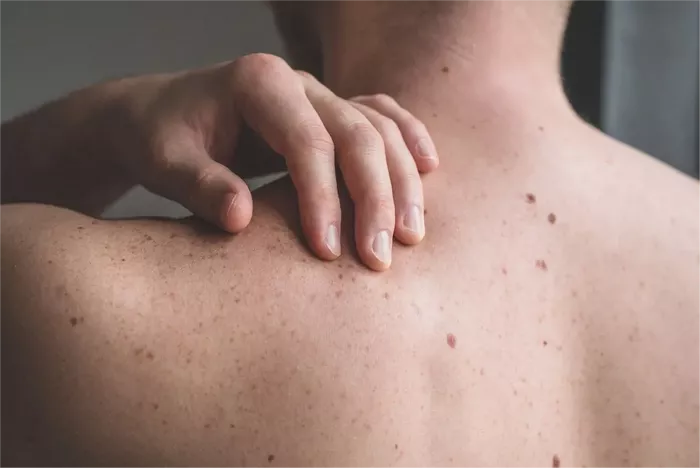Hidradenitis Suppurativa (HS), a chronic inflammatory skin condition, is characterized by painful nodules, abscesses, and sinus tracts typically occurring in areas rich in apocrine sweat glands, such as the axillae, groin, and buttocks. This condition significantly impacts the quality of life of those affected, often causing physical discomfort, emotional distress, and social isolation. Given its chronic nature and the challenges associated with managing its symptoms, individuals diagnosed with HS often ponder the possibility of spontaneous remission or improvement without medical intervention.
While HS is considered a chronic condition with no definitive cure, there have been instances where symptoms have reportedly subsided without specific treatment. However, the likelihood of HS resolving on its own varies greatly among individuals and is influenced by several factors, including the severity of the disease, underlying health conditions, lifestyle factors, and genetic predisposition.
Understanding Hidradenitis Suppurativa:
Before delving into the possibility of spontaneous resolution, it is crucial to comprehend the nature of Hidradenitis Suppurativa. This condition is characterized by the chronic inflammation of hair follicles, leading to the formation of painful nodules, abscesses, and sinus tracts. These lesions can rupture, leading to the drainage of purulent material and subsequent scarring. The exact cause of HS remains unclear, although it is believed to involve a combination of genetic, hormonal, and environmental factors.
Factors Influencing Spontaneous Resolution:
While HS is typically considered a chronic condition, there are several factors that may contribute to its spontaneous resolution or improvement:
1. Disease Severity: Mild cases of HS may have a higher likelihood of resolving spontaneously compared to moderate to severe cases. Mild forms of the condition may manifest as occasional flare-ups or isolated lesions that resolve without medical intervention.
2. Individual Variation: The course of HS can vary significantly among individuals. Some may experience periodic remissions where symptoms temporarily improve or disappear altogether, while others may have persistent and progressive disease.
3. Hormonal Changes: Hormonal fluctuations, such as those occurring during puberty, pregnancy, or menopause, can influence the severity of HS symptoms. In some cases, hormonal changes may coincide with periods of remission or improvement in symptoms.
4. Lifestyle Factors: Certain lifestyle factors, such as smoking, obesity, and poor hygiene, can exacerbate HS symptoms. Making positive lifestyle changes, such as quitting smoking, maintaining a healthy weight, and practicing good hygiene, may contribute to symptom improvement or remission.
5. Treatment Modalities: Although HS does not have a definitive cure, various treatment modalities, including topical and systemic medications, surgical procedures, and lifestyle modifications, can help manage symptoms and prevent disease progression. Individuals who undergo effective treatment may experience significant symptom relief and even long-term remission.
Clinical Evidence and Observations:
While spontaneous resolution of HS is rare, there have been anecdotal reports and limited clinical studies documenting cases of remission without specific treatment. These instances are often observed in individuals with mild disease activity or those who experience temporary improvements in symptoms.
One study published in the Journal of the American Academy of Dermatology reported on the natural history of HS in a cohort of 62 patients. The study found that approximately 14% of patients experienced spontaneous improvement in their HS symptoms over a median follow-up period of 5 years. However, it is essential to note that the majority of patients in the study required ongoing medical management to control their disease.
Clinical Management and Prognosis:
Despite the possibility of spontaneous resolution, clinical management remains crucial for individuals with Hidradenitis Suppurativa. Early diagnosis, appropriate treatment, and ongoing monitoring can help alleviate symptoms, prevent complications, and improve quality of life.
Treatment strategies for HS typically involve a combination of medical therapies, surgical interventions, and lifestyle modifications tailored to the individual patient’s needs and disease severity. Medical treatments may include topical and systemic antibiotics, anti-inflammatory medications, immunomodulators, and biologic agents. Surgical interventions, such as incision and drainage of abscesses, excision of affected tissue, and laser therapy, may be necessary for severe or recurrent cases.
Conclusion
While Hidradenitis Suppurativa is generally considered a chronic and progressive condition, there is a possibility of spontaneous resolution or improvement in symptoms, particularly in mild cases or during periods of hormonal changes. However, the likelihood of spontaneous remission varies among individuals and is influenced by various factors, including disease severity, hormonal fluctuations, lifestyle factors, and treatment modalities.
Clinical management remains paramount in the management of HS, focusing on symptom control, prevention of complications, and improvement of quality of life. Early diagnosis, appropriate treatment, and ongoing monitoring are essential components of effective disease management. While spontaneous resolution may occur in some cases, it should not detract from the importance of comprehensive care and multidisciplinary management for individuals with Hidradenitis Suppurativa.
























